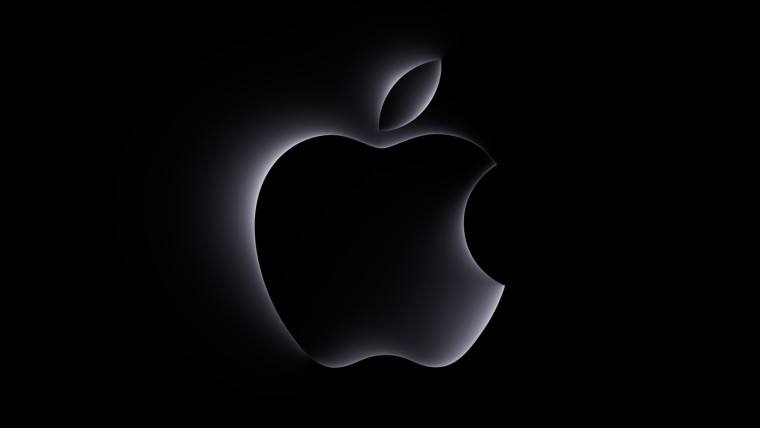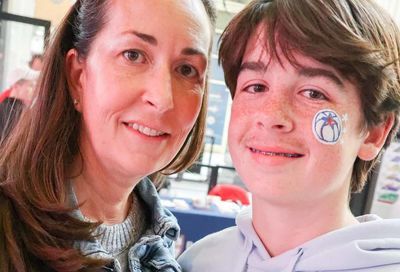Google debuts Android L, coming to cars and TVs
Search giant wants content to be accessible anywhere you are

Anyone worried that Google, already one of the world’s largest collectors of user data, could become even more omnipresent in our daily lives may want to stop reading. For everyone else (read: those less paranoid), Google has taken to the stage at this year’s I/O conference and announced their intention to bring the full power of its Android software to as many screens as possible — including into our cars and onto our smart TVs — to ensure users are never too far from their digital content.
Currently dubbed Android L, this new version of Google seeks to right a lot of wrongs with the platform. For starters, while one-seventh of the world’s population uses an Android device — that’s one billion people — only 15 percent of them are running the latest version, KitKat, released last year. At Apple’s WWDC event, Tim Cook announced that 90 percent of iPhone users were running iOS 7, the latest version. Fragmentation is a big problem for Google — if its users aren’t running the latest version of the OS, it impacts on the quality control and public perception of Android, as well as the individual user experience. Of course, the blame lies at the feet of the handset manufacturers and wireless networks — too often software updates are delayed by weeks, months or are simply abandoned, leaving users with outdated software.
The fix? Make the next version of Android, L, available now to Google’s hardware partners and third-party developers, and ensure that when it launches later this year it can be pushed to as many devices as possible and have as many compatible apps as possible from day one. Microsoft and Apple both do something similar with their updates, though they admittedly have a tiny number of handsets to worry about in comparison. If Google can make it work, and convince the lethargic manufacturers and networks pick up the pace, it’ll benefit everyone.
When it does land, L is shaping up to be a nice iteration of Android. Google is disguising some pretty deep technical changes under the guise of a simple design overhaul. Android L will bring Google’s Material Design UI, which entails a flat look to all elements of the OS, much like iOS 7’s overhauls and much like Windows Phone has been from the start. There’ll be rounder elements and softer edges to clean up every aspect of the OS, while a new verticality of stacked menus and windows will add a dynamic feel, complete with all new transition animations. These should also help to make the whole system feel more connected — click on something in one app, like a photo, which you want to open in another app and the content will float above the first window before sliding over and sinking into the second one.
As well as a fresh new look, Google has rummaged their hands through Android’s innards, pulling out any weak points and forcing in some nice new tweaks. Unlike iOS, which desperately needed the changes to its notification system that iOS 7 and 8 bring, Google has had robust notifications since the early days of Android. That hasn’t stopped its team from making them even better, as now notifications will pop up as contextual windows on the lock screen, unlocking the device straight into the relevant app if required. Notifications are also now organized based on their importance, as opposed to chronologically — individual apps will determine what is and isn’t important.
Security has also been beefed up, courtesy of Samsung’s Knox enterprise system. It’s now embedded as part of the standard OS. Essentially, it creates a Trusted Environment on the phone where all of your work apps and content can live, separate from all of your personal files. This way, IT managers can wipe or update work stuff from your phone without erasing those artsy photos of that great meal you had last week.
As an added bonus, everything you do with Android L will be faster and more efficient, a result of a new ART runtime powering the whole system. ART is the software library which makes all of Android’s apps work, and Google has overhauled it to make everything faster. Much faster. Apps will no longer decompress themselves when opening, while the entire architecture has been reworked to take advantage of 64-bit processors, which should enable smooth, efficient, powerful navigation of your device. Battery life will increase as a result, though Google is also baking in a battery saver mode which extends battery life by up to 90 minutes by turning off all non-essential services — something many manufacturers have already included in their current Android overlays.
That’s not all the changes — there are hundreds of new APIs for developers and even more will become apparent when the full version drops — but, for the most part, Android L will be the fastest, most beautiful, most efficient version of the all-conquering OS yet.
It’ll also be, if Google has its way, the most ubiquitous. Google already has Android Wear, which received its official hardware coming out party with three smartwatches running the new, lightweight version of Android showcased at I/O. However, with L, Google is also looking to our living rooms and our cars in ways it’s never been able to before.

Google already tried to break into the Smart TV market, launching Google TV four years ago to lukewarm response and limited adoption. It was ambitious, but neither the hardware nor software was ready for it. Google’s Chromecast dongle was a renewed attempt to bring Google apps into the living room, and has been a resounding success, but it’s undeniably limited in its capabilities.
Enter, then, Android TV. With Android TV, Google is looking to outsource adoption of the platform in much the same way as they have done with Android on smartphones and tablets. Google plans to make the OS available for Smart TVs, streaming devices, set-top boxes and dongles like the Chromecast. Whereas manufacturers previously had to design and test their own proprietary OS, now they can design their hardware to match Google’s minimum specifications and know that their users will get a guaranteed experience courtesy of Android TV.
Some big names are already on board, including Sony, Sharp and Roku, while app developers are working on bringing Android’s wealth of entertainment apps — including Netflix, Showtime and others — to the platform, alongside Google’s own Play content services and YouTube. Android TVs will be capable devices, with a minimum of 2GB of RAM, internet connectivity, voice control, Bluetooth 4.0 and built-in storage — which should mean no more lagging as you switch between apps and content.
Another addition is the ability play games, with developers able to port over Android games to the TV platform. Controllers that work with Android smartphones and tablets can be used, or a smartphone or tablet itself to control the games. It won’t rival a PS4 or Xbox One, but will be convenient for those looking to play a casual game on a bigger screen.
Chromecast hasn’t been forgotten in all of the Android TV drama, gaining some nifty new software tricks. Now, it will not only stream content from the multitude of apps which support it, but it will also showcase the screen of whatever device you’re using, should you wish to do so. Want to show off photos from your vacation on the big screen? Now you can — just make sure you don’t scroll too far. You know what we mean.
If Google can make Android TV work in the same way as its mobile OS, we could be looking at the next big thing in television. Given the demise of Google TV, however, we’ll wait and see how this one plays out.
So, you’ve got Android in your pocket or on your tablet, Android on your wrist and Android on your TV. What’s next? How about that commute, where you’re cut off from the outside world and all of your devices? Worry no more! Android Auto is here to ensure you never fully leave Google’s ecosystem.
Working exactly like Apple’s CarPlay, Android Auto will use your phone to project a version of Android onto the infotainment screen of your vehicle. Google has 32 manufacturers on board, 10 more than Apple has secured for CarPlay, though there are some exclusives. Apple currently holds Ferrari, Jaguar, Land Rover, BMW, Peugeot, Citroën and Mercedes Benz. Google has secured Alfa Romeo, Audi, Bentley, Chrysler, Dodge, Fiat, Jeep, Maserati, Ram, Renault, Seat, Skoda and Volkswagen. There are 19 companies batting for both teams.
You won’t have access to every app on your smartphone — no Grindr while sitting in traffic jams, unfortunately. Instead, Google will curate apps specifically designed to work on car entertainment screens. There’ll be no restrictions on input, either, with apps functioning via touchscreen or buttons and optimized for both. If touching isn’t your style, Google’s excellent voice search and control will be included.
Those with an Android Auto system will have to plug their phone into the car, rather than connecting via Bluetooth, but this could change in future. The system showcases the relevant app’s information at the top of the screen and its corresponding controls underneath. A persistent bar exists at the bottom of the screen to quickly navigate between key functions such as music and navigation.
Unlike Apple’s dull, icon-based interface — which looked bizarrely cheap in the Ferrari they used to showcase it — Android Auto will be customizable by the user. Different apps will have color-coded interfaces — Spotify will be Green, Play Music will be orange, and so on — though all will follow the same design template (info at the top, buttons underneath) to ensure ease of use and a consistent, safe experience for the driver. Google Maps, for instance, has larger buttons and a streamlined interface, while still being as useful and accurate as we’ve come to expect.
Users can also interact with Google Voice Search much like they would on their phone. Press your car’s voice button and ask for directions, check your upcoming appointments or check if there’s any donut shops nearby to satisfy your cravings.
From what we’ve seen of Android Auto, it looks to be a pretty powerful, clever system. It’s certainly a lot more attractive than Apple’s CarPlay, though both ultimately offer similar functionality. What it means, however, is those who favor Android over iOS will no longer be penalized for doing so — many current entertainment systems tend to offer greater connectivity and functionality to iPhone users.
Whatever your thoughts on Android, there’s no denying that what Google is trying to achieve is remarkable. No matter where you are, or what you’re doing — be it on your phone, surfing on a tablet, glancing at the time on your wrist or driving to work, there’s no excuse not to be shrouded in Google’s ecosystem. If Google can pull Android L together and deliver it all, we could see Android easily making its way to its next billion devices.
Support Metro Weekly’s Journalism
These are challenging times for news organizations. And yet it’s crucial we stay active and provide vital resources and information to both our local readers and the world. So won’t you please take a moment and consider supporting Metro Weekly with a membership? For as little as $5 a month, you can help ensure Metro Weekly magazine and MetroWeekly.com remain free, viable resources as we provide the best, most diverse, culturally-resonant LGBTQ coverage in both the D.C. region and around the world. Memberships come with exclusive perks and discounts, your own personal digital delivery of each week’s magazine (and an archive), access to our Member's Lounge when it launches this fall, and exclusive members-only items like Metro Weekly Membership Mugs and Tote Bags! Check out all our membership levels here and please join us today!


























You must be logged in to post a comment.